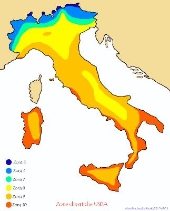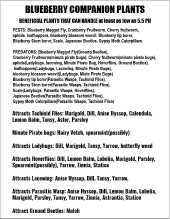
 3
3




Let Nature work for you.
 3
3




Standing on the shoulders of giants. Giants with dirt under their nails
 3
3




 1
1




Let Nature work for you.
 2
2




 2
2




Let Nature work for you.
 3
3





 3
3




dirk maes wrote:I've started 20 years with 2 plant, bought at Haeberli, a Swiss nurserie . Both Lonicera kamtschatika, Amur and Maitop. My soil is sandy and a bit dry. I only mulch with grass cuttings. I have always had fruits but they where on the small side. 5 years ago I bought a new plant. No idea what origin but blooms 2 weeks later en does not grow that high only 1 meter, as the other haskaps grow easily 2 meter. Since then the harvest is steadily increasing as is fruit-size. For me its a good early fruit crop , starting early May, with more aroma then sugar. Very few diseases but droughts are not always endured.
 2
2




Mike Haych wrote:I would highly recommend Aurora from the University of Saskatchewan. It's vastly superior to Borealis, Tundra, Honeybee, Indigo Gem, Indigo Treat and Indigo Yum. Aurora is truly sweet not sweet-tart or tart- sweet.
-- Wisdsom pursues me but I run faster.
 1
1





 1
1




 2
2




 Maybe some lemon rind (avoid the white pith as it's very bitter) or cinnamon or cloves if you enjoy those. Keep them soaked for a month or two, in my experience they don't need a lot of time. And then let it sit another couple of months after filtering. Same as any other liqueur really.
Maybe some lemon rind (avoid the white pith as it's very bitter) or cinnamon or cloves if you enjoy those. Keep them soaked for a month or two, in my experience they don't need a lot of time. And then let it sit another couple of months after filtering. Same as any other liqueur really.
-- Wisdsom pursues me but I run faster.
 1
1




 1
1




 1
1




 2
2




Let Nature work for you.
 1
1




Let Nature work for you.
 1
1




Crt Jakhel wrote:Nevertheless the plants did well. We have Amfora, Wojtek, Indigo Yum, Morena, Karina, Nimfa, Amofra, Uspiech, Zojka and Bakcarsky Div and they are all so-so.
-- Wisdsom pursues me but I run faster.
 2
2




Let Nature work for you.
 4
4










 2
2




Other people may reject you but if you lie in the forest floor for long enough the moss and fungi will accept you as one of their own!
 4
4





-- Wisdsom pursues me but I run faster.






 1
1




Other people may reject you but if you lie in the forest floor for long enough the moss and fungi will accept you as one of their own!
 1
1




 1
1




Gert in the making
 1
1




Transplanted gardener trying to start over in a strange new land - all advice gratefully accepted!




Scott Charles wrote:
The plants don't drop as many leaves as in the pics above, but they do suffer quite a bit once we get to the 80F and higher temperatures which around here has been in early June. With the shift in climate it seems we get a short spring with many cold snaps and lots of rain, then a quick jump to hotter summer temps that stick around right through August.
I don't own the plants, they own me.




Gert in the making
 1
1






